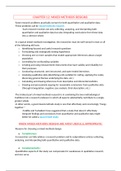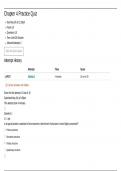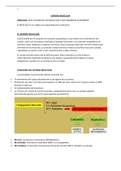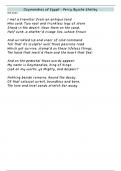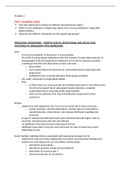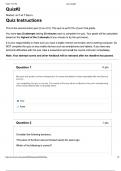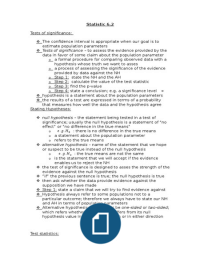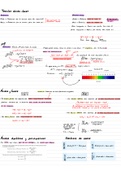CHAPTER 12: MIXED METHODS DESIGNS:
-Some research problems practically scream for both quantitative and qualitative data.
-These problems call for mixed-methods research.
-Such research involves not only collecting, analyzing, and interpreting both
quantitative and qualitative data but also integrating conclusions from those data
into a cohesive whole.
-In a typical mixed-methods investigation, the researcher must be well-versed in most or all
of the following skill sets:
o Identifying focused and useful research questions
o Formulating and strategically testing hypotheses
o Choosing one or more samples that enable appropriate inferences about a larger
population
o Controlling for confounding variables
o Creating and using measurement instruments that have validity and reliability for
their purposes
o Conducting structured, semi structured, and open-ended interviews
o Analyzing qualitative data (identifying units suitable for coding, applying the codes,
discerning general themes underlying the data, etc.)
o Calculating and drawing inferences from descriptive and inferential statistics
o Drawing and persuasively arguing for reasonable conclusions from qualitative data
(through triangulation, negative case analysis, thick description, etc.)
-The trickiest part of mixed-methods research is in combining the two methodological
traditions into a research endeavor in which all aspects substantially contribute to a single,
greater whole.
-In other words, a good mixed-methods study is one that effectively and convincingly “hangs
together.”
-Teddlie and Tashakkori have suggested that a study that doesn’t effectively
integrate findings and conclusions from quantitative and qualitative data might
better be called a quasi-mixed study.
WHEN MIXED-METHODS DESIGNS ARE MOST USEFUL & APPROPRIATE:
-Reasons for choosing a mixed-methods design:
o Completeness:
-A researcher can fully address a research problem and its subproblems only by collecting,
analyzing, and interpreting both quantitative and qualitative data.
o Complementarity:
-Quantitative aspects of the study can compensate for weaknesses in qualitative research,
and vice versa.
, -For example, the results of unstructured interviews with only a small number of individuals
(which might raise concerns about generalizability) can be replicated by administering a
questionnaire to a larger, more representative sample.
o Hypothesis Generation and Testing:
-Qualitative data often provide insights that help a researcher form hypothesis about cause-
and-effect relationships—hypotheses that the researcher can subsequently test through
controlled, quantitative research.
o Development of Appropriate Research Tools and Strategies:
-One type of data can inform and guide subsequent collection of another type of data.
-For example, unstructured interviews (yielding qualitative data) can guide the construction
of appropriate questions for a survey (which will yield quantitative data).
o Resolution of Puzzling Findings:
-In a quantitative study, various results can sometimes seem inconsistent or contradictory;
qualitative data may reveal underlying nuances and meanings that can help the researcher
make sense of the numbers.
o Triangulation:
-A researcher can make a more convincing case for particular conclusions if both
quantitative and qualitative data lead to those conclusions.
COMMON MIXED-METHODS DESIGNS:
1. Convergent Designs:
-A researcher collects both quantitative and qualitative data in parallel, usually at the same
time and with respect to the same general research problem.
-The researcher gives similar or equal weight to the two types of data and strives for
triangulation, with the hope that analyses of both data sets lead to similar conclusions about
the phenomenon under investigation.
2. Embedded Designs:
-Is similar to a convergent design, in that both quantitative and qualitative data are collected
within the same general time frame.
-However, one general approach dominates—perhaps a qualitative approach, but more
often a quantitative one—with the other approach serving in a secondary, supplementary
role.
-Some research problems practically scream for both quantitative and qualitative data.
-These problems call for mixed-methods research.
-Such research involves not only collecting, analyzing, and interpreting both
quantitative and qualitative data but also integrating conclusions from those data
into a cohesive whole.
-In a typical mixed-methods investigation, the researcher must be well-versed in most or all
of the following skill sets:
o Identifying focused and useful research questions
o Formulating and strategically testing hypotheses
o Choosing one or more samples that enable appropriate inferences about a larger
population
o Controlling for confounding variables
o Creating and using measurement instruments that have validity and reliability for
their purposes
o Conducting structured, semi structured, and open-ended interviews
o Analyzing qualitative data (identifying units suitable for coding, applying the codes,
discerning general themes underlying the data, etc.)
o Calculating and drawing inferences from descriptive and inferential statistics
o Drawing and persuasively arguing for reasonable conclusions from qualitative data
(through triangulation, negative case analysis, thick description, etc.)
-The trickiest part of mixed-methods research is in combining the two methodological
traditions into a research endeavor in which all aspects substantially contribute to a single,
greater whole.
-In other words, a good mixed-methods study is one that effectively and convincingly “hangs
together.”
-Teddlie and Tashakkori have suggested that a study that doesn’t effectively
integrate findings and conclusions from quantitative and qualitative data might
better be called a quasi-mixed study.
WHEN MIXED-METHODS DESIGNS ARE MOST USEFUL & APPROPRIATE:
-Reasons for choosing a mixed-methods design:
o Completeness:
-A researcher can fully address a research problem and its subproblems only by collecting,
analyzing, and interpreting both quantitative and qualitative data.
o Complementarity:
-Quantitative aspects of the study can compensate for weaknesses in qualitative research,
and vice versa.
, -For example, the results of unstructured interviews with only a small number of individuals
(which might raise concerns about generalizability) can be replicated by administering a
questionnaire to a larger, more representative sample.
o Hypothesis Generation and Testing:
-Qualitative data often provide insights that help a researcher form hypothesis about cause-
and-effect relationships—hypotheses that the researcher can subsequently test through
controlled, quantitative research.
o Development of Appropriate Research Tools and Strategies:
-One type of data can inform and guide subsequent collection of another type of data.
-For example, unstructured interviews (yielding qualitative data) can guide the construction
of appropriate questions for a survey (which will yield quantitative data).
o Resolution of Puzzling Findings:
-In a quantitative study, various results can sometimes seem inconsistent or contradictory;
qualitative data may reveal underlying nuances and meanings that can help the researcher
make sense of the numbers.
o Triangulation:
-A researcher can make a more convincing case for particular conclusions if both
quantitative and qualitative data lead to those conclusions.
COMMON MIXED-METHODS DESIGNS:
1. Convergent Designs:
-A researcher collects both quantitative and qualitative data in parallel, usually at the same
time and with respect to the same general research problem.
-The researcher gives similar or equal weight to the two types of data and strives for
triangulation, with the hope that analyses of both data sets lead to similar conclusions about
the phenomenon under investigation.
2. Embedded Designs:
-Is similar to a convergent design, in that both quantitative and qualitative data are collected
within the same general time frame.
-However, one general approach dominates—perhaps a qualitative approach, but more
often a quantitative one—with the other approach serving in a secondary, supplementary
role.

